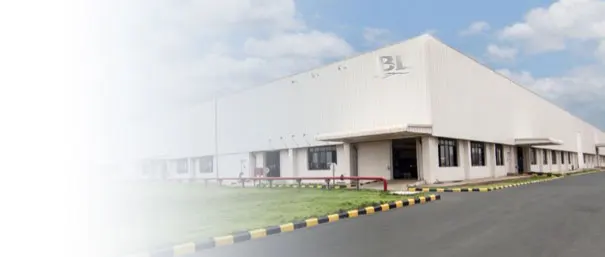In the demanding world of automotive manufacturing, every material choice carries significant weight, impacting vehicle performance, safety, aesthetics, and cost-efficiency. Among the most critical decisions is the selection of steel, specifically whether to opt for hot-rolled or cold-rolled carbon steel coils. Each variant offers distinct properties derived from its manufacturing process, making it suitable for different automotive applications. Understanding these nuances is crucial for engineers and designers aiming to optimize their parts for maximum efficiency and superior quality.


Hot Rolled Carbon Steel Coils: The Foundation of Strength
Hot rolling is a metalworking process that occurs at extremely high temperatures, typically above 926°C (1700°F), which is above the steel’s recrystallization temperature. At this temperature, the steel is easier to form and shape, allowing for the production of large sections without the risk of work hardening. As the name suggests, steel coils are rolled while hot, then allowed to cool.
Key Characteristics of Hot Rolled Steel:
- Surface Finish: Due to the high temperatures and subsequent cooling, hot-rolled steel typically has a rough, scaled surface (mill scale). This mill scale can be removed through pickling if a smoother finish is required.
- Dimensional Tolerance: Hot rolling results in less precise dimensional tolerances compared to cold rolling, with slight variations in thickness and width possible.
- Strength and Ductility: It possesses good strength and excellent ductility, making it highly formable for various applications. It generally has a lower yield strength than cold-rolled steel.
- Cost-Effectiveness: As it requires less processing, hot-rolled steel is generally more economical to produce.
Automotive Applications:
Hot-rolled carbon steel coils are widely used in automotive parts where strength, cost-effectiveness, and formability are prioritized over precise dimensions or a pristine surface finish. Common applications include:
- Chassis and Frame Components: Their robust nature makes them ideal for the underlying structural framework of vehicles.
- Suspension Parts: Durability and the ability to withstand significant stress are key.
- Wheel Rims: Requiring high strength and impact resistance.
- Internal Structural Supports: Non-exposed parts where surface aesthetics are not a concern.
Cold Rolled Carbon Steel Coils: Precision and Aesthetics
Cold rolling is a further processing of hot-rolled steel, performed at or near room temperature (below the steel’s recrystallization temperature). The hot-rolled coils are first pickled to remove mill scale, then passed through a series of rollers to achieve the desired thickness and surface finish. This process hardens the steel and improves its mechanical properties.
Key Characteristics of Cold Rolled Steel:
- Surface Finish: Boasts a smooth, bright, and clean surface, making it ideal for painting, plating, or other surface treatments without extensive preparation.
- Dimensional Tolerance: Offers superior dimensional accuracy and consistency, with tight tolerances for thickness and flatness.
- Strength and Hardness: Exhibits higher yield and tensile strength, along with improved hardness due to work hardening during the rolling process.
- Formability: While generally less ductile than hot-rolled, specific cold-rolled grades and annealing processes can provide excellent formability for complex designs.
- Cost: The additional processing steps make cold-rolled steel more expensive than hot-rolled.
Automotive Applications:
Cold-rolled carbon steel coils are preferred for automotive parts requiring a superior aesthetic finish, tight tolerances, or enhanced mechanical properties. Key applications include:
- Exterior Body Panels: Doors, hoods, fenders, and trunks benefit from its smooth surface for painting.
- Exposed Trim Components: Parts that are visible to the consumer and require a flawless appearance.
- Precision Gears and Small Engine Parts: Where tight dimensional control is critical for performance.
- Brake Components: Requiring consistent thickness and strength.
- Seat Frames and Interior Components: Where appearance and structural integrity are both important.
Key Differentiators: A Comparative Look
To simplify the decision-making process, here’s a comparative overview of hot-rolled versus cold-rolled carbon steel coils:
| Property | Hot Rolled Carbon Steel | Cold Rolled Carbon Steel |
|---|---|---|
| Manufacturing Process | Rolled at high temperatures (above recrystallization point). | Further processed from hot rolled, at room temperature. |
| Surface Finish | Rough, scaled surface (mill scale present). | Smooth, bright, clean finish. |
| Dimensional Accuracy | Less precise, wider tolerances. | Highly precise, tighter tolerances. |
| Strength & Hardness | Good strength, high ductility, lower yield strength. | Higher yield and tensile strength, increased hardness. |
| Formability | Excellent for large, structural shapes. | Good, but can be harder to form; suitable for complex precise shapes. |
| Cost | Generally more economical. | Higher cost due to additional processing. |
| Typical Automotive Use | Chassis, frames, structural supports, wheels. | Body panels, exposed parts, precision components. |
Choosing the Right Coil for Your Automotive Parts: Critical Factors
The decision between hot-rolled and cold-rolled carbon steel coils is rarely straightforward and should be guided by several key considerations:
- Application and Functionality: Is the part a structural component that needs to bear heavy loads, or an aesthetic part visible to the end-user? This is arguably the most important factor.
- Aesthetic Requirements: If the part will be exposed and painted, the superior surface finish of cold-rolled steel is often preferred to reduce preparation time and cost.
- Budgetary Constraints: Hot-rolled steel is more budget-friendly. If cost is a primary driver and its properties meet the application’s needs, it’s the logical choice.
- Mechanical Properties: Evaluate the required yield strength, tensile strength, ductility, and hardness. Cold-rolled steel generally offers higher strength, but hot-rolled offers better ductility for deep drawing.
- Tolerance and Precision: For components requiring tight dimensional control, cold-rolled steel provides the necessary precision.
- Weldability and Machinability: While both are weldable, the specific grade and composition can influence how easily they are machined or welded.
BaoLi Iron & Steel: Your Partner in Automotive Steel Solutions
At BaoLi Iron & Steel Co.,Ltd, a leading Chinese steel manufacturer, we understand the intricacies involved in selecting the perfect steel for your automotive components. We specialize in providing a wide range of high-quality steel products, including both hot-rolled and cold-rolled carbon steel coils, specifically engineered to meet the rigorous demands of the automotive industry. Our commitment extends beyond just supplying steel; we aim to be your trusted partner, offering solutions tailored to your unique manufacturing challenges.
We pride ourselves on our customization capabilities. Whether you require specific dimensions, unique specifications, or particular performance characteristics, our experienced team works closely with you to produce steel that perfectly aligns with your project’s precise needs. Our flexible approach ensures you receive material optimized for your production processes, leading to greater efficiency and superior final products.
Quality is at the core of everything we do. Through a stringent quality control system, BaoLi Iron & Steel guarantees that every coil adheres to the highest international standards, ensuring 100% customer satisfaction. We know that reliability and consistency are paramount in automotive manufacturing, and our products reflect this unwavering commitment.
While this article focuses on carbon steel, BaoLi’s comprehensive product range also includes high-grade stainless steel solutions, perfect for corrosion-resistant or high-strength aesthetic applications. Furthermore, for components exposed to harsh environments, our expertly crafted galvanized steel products offer superior protection and extended longevity. Our global service network ensures seamless delivery and comprehensive support, wherever your operations are located.
Our dedicated team also provides unparalleled technical support, guiding you through material selection and application challenges. With BaoLi Iron & Steel, you’re not just purchasing steel; you’re gaining a strategic partner committed to your success.
Conclusion
The decision between hot-rolled and cold-rolled carbon steel coils for automotive parts is a critical one, directly influencing performance, aesthetics, and manufacturing costs. By carefully evaluating the specific requirements of each component against the unique properties of these steel types, manufacturers can make informed choices. Partnering with a knowledgeable and reliable supplier like BaoLi Iron & Steel ensures you receive the optimal material, backed by expert guidance and unwavering quality, ultimately driving the success and innovation of your automotive projects.


